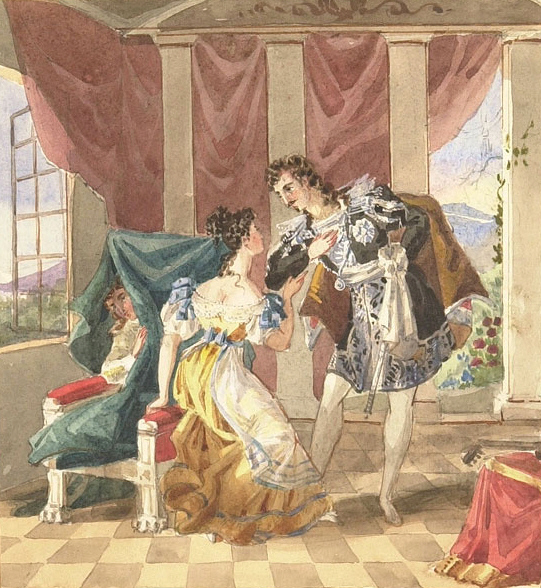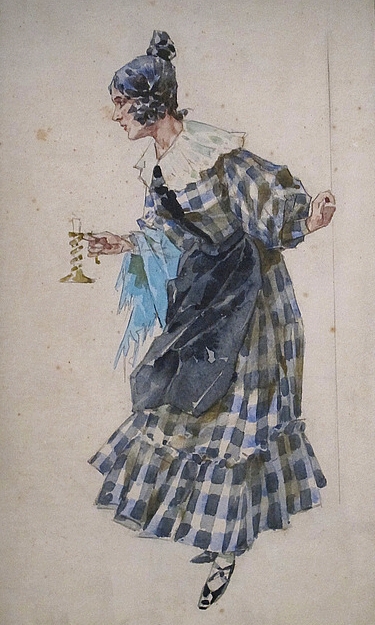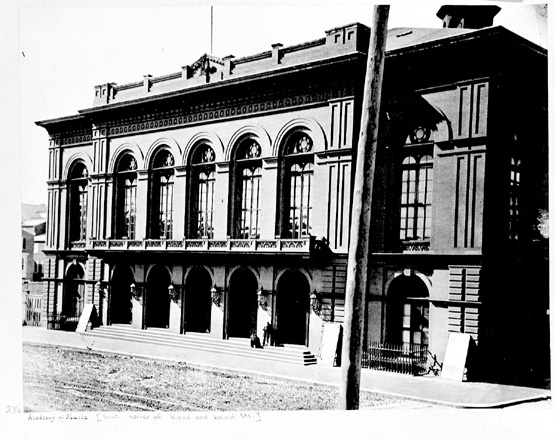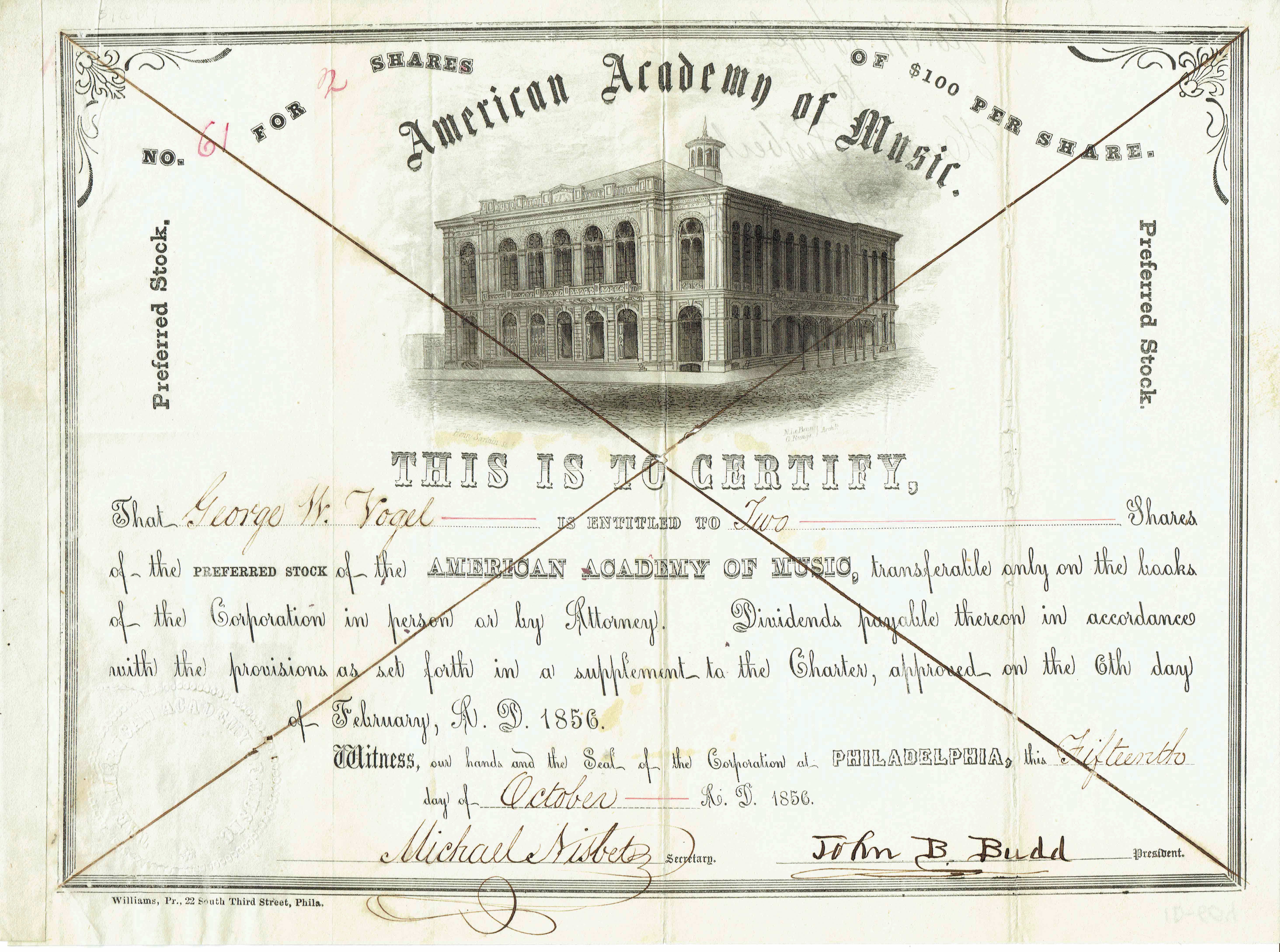|
Leonard Treash
Leonard Treash (January 1, 1909 in Pennsylvania – January 31, 1996 in Rochester, New York) was an American bass, opera director, and educator. As a performer he sang leading opera roles throughout the United States under such conductors as Fritz Reiner, Leopold Stokowski, Artur Rodzinski, and Erich Leinsdorf. He was particularly active as a performer with opera companies in Philadelphia, and is especially remembered as the long time director of the opera program at the Eastman School of Music, a post he held for nearly 30 years. He also served as General Director of Chautauqua Opera for 10 seasons and was the first President of the National Opera Association from 1955-1956. Life and career Born and raised in Pennsylvania, Treash was the son of Harvey Beaumont Treash and Bernice Pugsly. He studied singing at the Cincinnati College-Conservatory of Music and at the Curtis Institute of Music in Philadelphia. While a student he made his first professional opera performance on ... [...More Info...] [...Related Items...] OR: [Wikipedia] [Google] [Baidu] |
Rochester, New York
Rochester () is a City (New York), city in the U.S. state of New York (state), New York, the county seat, seat of Monroe County, New York, Monroe County, and the fourth-most populous in the state after New York City, Buffalo, New York, Buffalo, and Yonkers, New York, Yonkers, with a population of 211,328 at the 2020 United States census. Located in Western New York, the city of Rochester forms the core of a larger Rochester metropolitan area, New York, metropolitan area with a population of 1 million people, across six counties. The city was one of the United States' first boomtowns, initially due to the fertile Genesee River Valley, which gave rise to numerous flour mills, and then as a manufacturing center, which spurred further rapid population growth. Rochester rose to prominence as the birthplace and home of some of America's most iconic companies, in particular Eastman Kodak, Xerox, and Bausch & Lomb (along with Wegmans, Gannett, Paychex, Western Union, French's, Cons ... [...More Info...] [...Related Items...] OR: [Wikipedia] [Google] [Baidu] |
Parsifal
''Parsifal'' ( WWV 111) is an opera or a music drama in three acts by the German composer Richard Wagner and his last composition. Wagner's own libretto for the work is loosely based on the 13th-century Middle High German epic poem ''Parzival'' of the ''Minnesänger'' Wolfram von Eschenbach, recounting the story of the Arthurian knight Parzival (Percival) and his quest for the Holy Grail. Wagner conceived the work in April 1857, but did not finish it until 25 years later. In composing it he took advantage of the particular acoustics of his Bayreuth Festspielhaus. ''Parsifal'' was first produced at the second Bayreuth Festival in 1882. The Bayreuth Festival maintained a monopoly on ''Parsifal'' productions until 1903, when the opera was performed at the Metropolitan Opera in New York. Wagner described ''Parsifal'' not as an opera, but as (a festival play for the consecration of the stage). At Bayreuth a tradition has arisen that audiences do not applaud at the end of the first ... [...More Info...] [...Related Items...] OR: [Wikipedia] [Google] [Baidu] |
The Marriage Of Figaro
''The Marriage of Figaro'' ( it, Le nozze di Figaro, links=no, ), K. 492, is a ''commedia per musica'' (opera buffa) in four acts composed in 1786 by Wolfgang Amadeus Mozart, with an Italian libretto written by Lorenzo Da Ponte. It premiered at the Burgtheater in Vienna on 1 May 1786. The opera's libretto is based on the 1784 stage comedy by Pierre Beaumarchais, '' La folle journée, ou le Mariage de Figaro'' ("The Mad Day, or The Marriage of Figaro"). It tells how the servants Figaro and Susanna succeed in getting married, foiling the efforts of their philandering employer Count Almaviva to seduce Susanna and teaching him a lesson in fidelity. Considered one of the greatest operas ever written, it is a cornerstone of the repertoire and appears consistently among the top ten in the Operabase list of most frequently performed operas. In 2017, BBC News Magazine asked 172 opera singers to vote for the best operas ever written. ''The Marriage of Figaro'' came in first out of ... [...More Info...] [...Related Items...] OR: [Wikipedia] [Google] [Baidu] |
Così Fan Tutte
(''All Women Do It, or The School for Lovers''), K. 588, is an opera buffa in two acts by Wolfgang Amadeus Mozart. It was first performed on 26 January 1790 at the Burgtheater in Vienna, Austria. The libretto was written by Lorenzo Da Ponte who also wrote ''Le nozze di Figaro'' and ''Don Giovanni''. Although it is commonly held that was written and composed at the suggestion of the Emperor Joseph II, recent research does not support this idea. There is evidence that Mozart's contemporary Antonio Salieri tried to set the libretto but left it unfinished. In 1994, John Rice uncovered two terzetti by Salieri in the Austrian National Library. The short title, ''Così fan tutte'', literally means "So do they all", using the feminine plural (''tutte'') to indicate women. It is usually translated into English as "Women are like that". The words are sung by the three men in act 2, scene 3, just before the finale; this melodic phrase is also quoted in the overture to the opera. Da P ... [...More Info...] [...Related Items...] OR: [Wikipedia] [Google] [Baidu] |
La Bohème
''La bohème'' (; ) is an opera in four acts,Puccini called the divisions ''quadri'', ''tableaux'' or "images", rather than ''atti'' (acts). composed by Giacomo Puccini between 1893 and 1895 to an Italian libretto by Luigi Illica and Giuseppe Giacosa, based on ''Scènes de la vie de bohème'' (1851) by Henri Murger. The story is set in Paris around 1830 and shows the Bohemian lifestyle (known in French as "") of a poor seamstress and her artist friends. The world premiere of ''La bohème'' was in Turin on 1 February 1896 at the Teatro Regio, conducted by the 28-year-old Arturo Toscanini. Since then, ''La bohème'' has become part of the standard Italian opera repertory and is one of the most frequently performed operas worldwide. In 1946, fifty years after the opera's premiere, Toscanini conducted a commemorative performance of it on radio with the NBC Symphony Orchestra. A recording of the performance was later released by RCA Victor on vinyl record, tape and compact disc. ... [...More Info...] [...Related Items...] OR: [Wikipedia] [Google] [Baidu] |
Philadelphia Opera Company
The Philadelphia Opera Company was the name of two different American opera companies active during the twentieth century in Philadelphia, Pennsylvania. The first company was founded by impresario Oscar Hammerstein I in 1908. That company disbanded only two years later as a result of financial problems. The second company was founded by conductor Sylvan Levin in 1938 and was active for six years before it too closed due to financial reasons in 1944. Hammerstein's Philadelphia Opera Company: 1908-1910 In 1907 Oscar Hammerstein I hired architect William H. McElfatrick of the firm J.B. McElfatrick & Son to design a new opera house for the city of Philadelphia. The plans were approved and in 1908 the Philadelphia Opera House was built over the course of just a few months at 858 North Broad Street. The structure was built specifically for Hammerstein's latest artistic venture, his new opera company, the Philadelphia Opera Company (POC). Notable singers to have performed with the POC ... [...More Info...] [...Related Items...] OR: [Wikipedia] [Google] [Baidu] |
Philadelphia Civic Grand Opera Company
The Philadelphia Civic Grand Opera Company (PCGOC) was an American opera company located in Philadelphia, Pennsylvania that was actively performing at the Academy of Music between 1950 and 1955. Fausta Cleva served as the company's first General Director and conductor, and Chevalier L. Jackson was the governing board's first president. The company's first performance was of Camille Saint-Saëns's ''Samson et Dalila'' on January 24, 1950 with Giovanni Martinelli as Samson, Blanche Thebom as Dalila, Martial Singher as The High Priest of Dagon, and John Lawler as Abimélech. Other operas presented that season were ''Cavalleria rusticana'', ''L'amico Fritz'', and ''Carmen''.New York Public Library for the Performing Arts: ''Folder: Philadelphia Civic Grand Opera Company'' Cleva left the PCGOC after its first season and Giuseppe Bamboschek took over the role of General Director and conductor for the remainder of the company's history. Bamboschek had previously served as musical direc ... [...More Info...] [...Related Items...] OR: [Wikipedia] [Google] [Baidu] |
Le Pauvre Matelot
(''The Poor Sailor'') is a three-act opera (described as a ' complainte') composed by Darius Milhaud with libretto by Jean Cocteau. It was given its premiere on 16 December 1927 by the Opéra-Comique at the Salle Favart in Paris. ''Le pauvre matelot'' is short, lasting about 35 minutes when performed, and is dedicated to Henri Sauguet. The composer conducted a complete recording with forces of the Paris Opera in 1956. Although Cocteau claimed that the story was inspired by a news item in a paper, the scenario can be found in a 17th-century Franco-Canadian song 'Le Funeste Retour', and the tragedy ''Der vierundzwanzigste Februar'' by Werner of 1808. Performance history The work was a successful part of a triple bill at La Monnaie in Brussels at the end of 1927 conducted by Corneil de Thoran, preceded by the premiere of ''Antigone'' by Honegger, and followed by ''Shéhérazade''.'Computerised Archival Retrieval in Multimedia Enhanced Networking' - The digital opera archives of ... [...More Info...] [...Related Items...] OR: [Wikipedia] [Google] [Baidu] |
Darius Milhaud
Darius Milhaud (; 4 September 1892 – 22 June 1974) was a French composer, conductor, and teacher. He was a member of Les Six—also known as ''The Group of Six''—and one of the most prolific composers of the 20th century. His compositions are influenced by jazz and Brazilian music and make extensive use of polytonality. Milhaud is considered one of the key modernist composers.Reinhold Brinkmann & Christoph Wolff, ''Driven into Paradise: The Musical Migr ... [...More Info...] [...Related Items...] OR: [Wikipedia] [Google] [Baidu] |
Amelia Goes To The Ball
''Amelia al ballo'' (''Amelia Goes to the Ball'') is a one-act ''opera buffa'' by Gian Carlo Menotti, who set his own Italian libretto. Composed during 1936 when Menotti was in his mid-twenties, it was the composer's first mature opera and first critical success. The opera recounts a series of farcical events as a young Italian socialite overcomes obstacles to her attendance at the first ball of the season. Performance history Menotti secured a premiere for the work in Philadelphia. This required, however, a translation into English of the original libretto. George Mead prepared the translation and Menotti made minor revisions to the music to fit the new English words. Staged by the Curtis Institute of Music, ''Amelia Goes to the Ball'' premiered on April 1, 1937, at the Philadelphia Academy of Music under the direction of Austrian composer, librettist, and stage director Ernst Lert, with set and costume designs by Tony Award-winning designer Donald Oenslager. The opera was presen ... [...More Info...] [...Related Items...] OR: [Wikipedia] [Google] [Baidu] |
Gian Carlo Menotti
Gian Carlo Menotti (, ; July 7, 1911 – February 1, 2007) was an Italian composer, librettist, director, and playwright who is primarily known for his output of 25 operas. Although he often referred to himself as an American composer, he kept his Italian citizenship. One of the most frequently performed opera composers of the 20th century, his most successful works were written in the 1940s and 1950s. Highly influenced by Giacomo Puccini and Modest Mussorgsky, Menotti further developed the verismo tradition of opera in the post-World War II era. Rejecting atonality and the aesthetic of the Second Viennese School, Menotti's music is characterized by expressive lyricism which carefully sets language to natural rhythms in ways that highlight textual meaning and underscore dramatic intent. Like Wagner, Menotti wrote the libretti of all his operas. He wrote the classic Christmas opera '' Amahl and the Night Visitors'' (1951), along with over two dozen other operas intended to appe ... [...More Info...] [...Related Items...] OR: [Wikipedia] [Google] [Baidu] |
Academy Of Music (Philadelphia)
The Academy of Music, also known as American Academy of Music, is a concert hall and opera house located at 240 S. Broad Street in Philadelphia, Pennsylvania. Its location is between Locust and Manning Streets in the Avenue of the Arts area of Center City. The hall was built in 1855–57 and is the oldest opera house in the United States that is still used for its original purpose. Known as the "Grand Old Lady of Locust Street," the venue is the home of the Philadelphia Ballet and Opera Philadelphia. It was also home to the Philadelphia Orchestra from its inception in 1900 until 2001, when the orchestra moved to the new Kimmel Center for the Performing Arts. The Philadelphia Orchestra still retains ownership of the Academy. The hall was designated a National Historic Landmark in 1962.Charles E. Shedd Jr., et al. (December 1979) , National Park Service and History The Academy of Music held an inaugural ball on January 26, 1857. At the time ''The New York Times'' described ... [...More Info...] [...Related Items...] OR: [Wikipedia] [Google] [Baidu] |





